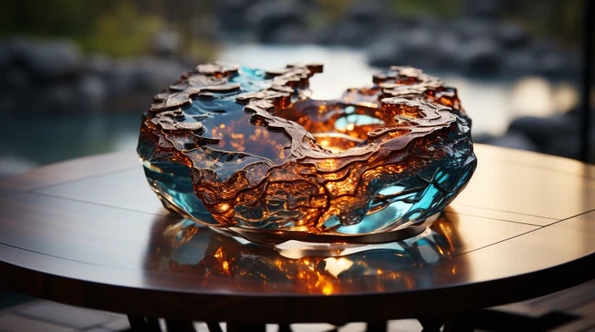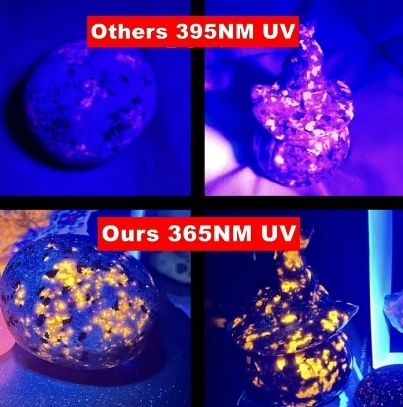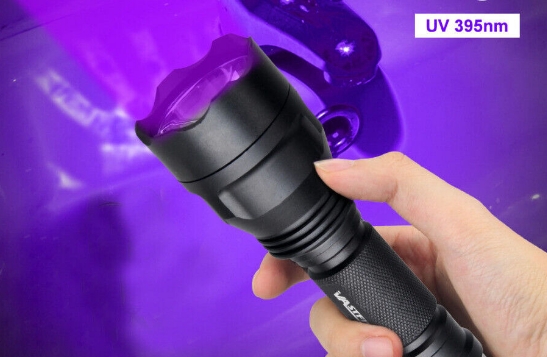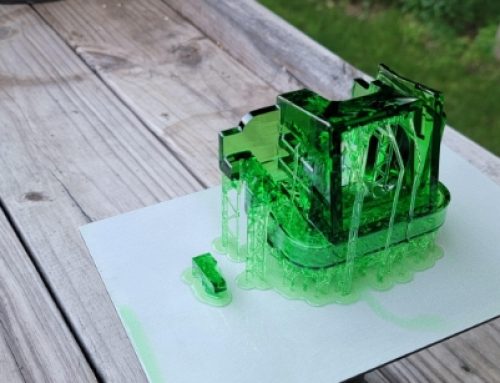UV flashlights are an indispensable tool in resin art and crafting. They offer precision, control, and efficiency, making them ideal for curing resin and exploring creative applications. This guide explores the top uses of UV flashlights in resin art, factors to consider when choosing one, and tips for effective use.
How UV Flashlights Work in Resin Art

UV flashlights emit ultraviolet light, typically at wavelengths of 365nm or 395nm, to cure UV-sensitive resin. This process triggers a chemical reaction that solidifies the resin, providing strong, durable, and transparent results.
Top Applications of UV Flashlights in Resin Art

| Application | How It Works | Key Benefits |
|---|---|---|
| Small Resin Projects | Curing small items like charms, pendants, and beads with precision. | Quick curing and high accuracy for intricate designs. |
| Layered Resin Art | Curing each layer of resin individually to create depth and detail. | Allows control over complex, multi-layered projects. |
| Spot Repairs | Fixing imperfections, bubbles, or uneven surfaces in resin work. | Easy and efficient way to perfect your projects. |
| Embedding Objects | Securing small items like flowers, shells, or beads inside resin. | Prevents movement and ensures proper placement of embedded objects. |
| UV Resin Painting | Using UV resin to create textured art pieces or add highlights to existing art. | Versatile application for creative expression. |
Key Features to Look for in a UV Flashlight for Resin Art
| Feature | Why It Matters | Recommended Option |
|---|---|---|
| Wavelength | 365nm is ideal for professional-grade curing; 395nm is suitable for general crafting. | Tank007 AA02 UV Flashlight offers a precise 365nm wavelength. |
| Power Output | Higher wattage ensures faster and more effective curing. | A flashlight with 3W or above is highly recommended. |
| Beam Focus | Adjustable focus helps target specific areas or provide wide coverage. | Flashlights with zoomable lenses offer added flexibility. |
| Battery Life | Long-lasting or rechargeable batteries are more convenient for extended use. | Consider models that support AA or 18650 batteries. |
| Durability | Sturdy and heat-resistant materials ensure longevity and safe operation. | Look for aluminum casing with waterproof features. |
Comparison of 365nm vs. 395nm UV Flashlights in Resin Art

| Feature | 365nm UV Flashlight | 395nm UV Flashlight |
|---|---|---|
| Wavelength Purity | Emits true UV light, better for professional-grade resin projects. | Emits a mix of UV and visible light, which may cause slight discoloration. |
| Curing Speed | Faster and more precise curing for UV resin. | Slightly slower, suitable for beginners or hobbyists. |
| Applications | Ideal for detailed and high-quality projects requiring flawless finishes. | Suitable for basic resin crafting and casual use. |
| Price Range | Slightly higher due to advanced features and wavelength accuracy. | Generally more affordable and widely available. |
Tips for Using UV Flashlights in Resin Art
- Wear Protective Gear: UV light can harm skin and eyes; use gloves and UV-blocking goggles.
- Use High-Quality Resin: Ensure the resin is UV-sensitive and compatible with your flashlight.
- Cure in Layers: For deep projects, cure in thin layers to avoid bubbles or uneven curing.
- Avoid Overexposure: Excessive UV light may cause resin to yellow or crack.
- Test Before Final Curing: Use the flashlight on a small area to ensure proper curing.
Common Mistakes and How to Avoid Them

- Using the Wrong Wavelength: A 395nm flashlight might not work effectively with some resins. Always check the resin’s specifications.
- Curing Too Quickly: Gradual curing ensures durability and reduces bubbles.
- Improper Storage of Resin: UV resin should be stored in dark, cool places to prevent premature curing.
Conclusion
UV flashlights revolutionize resin art by offering precision, speed, and control. Whether you’re a professional artist or a hobbyist, investing in a high-quality flashlight, such as the Tank007 AA02 UV Flashlight, will significantly enhance your crafting experience. By understanding the applications, features, and best practices, you can create stunning, durable resin art with ease.

